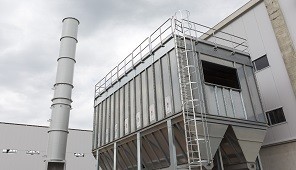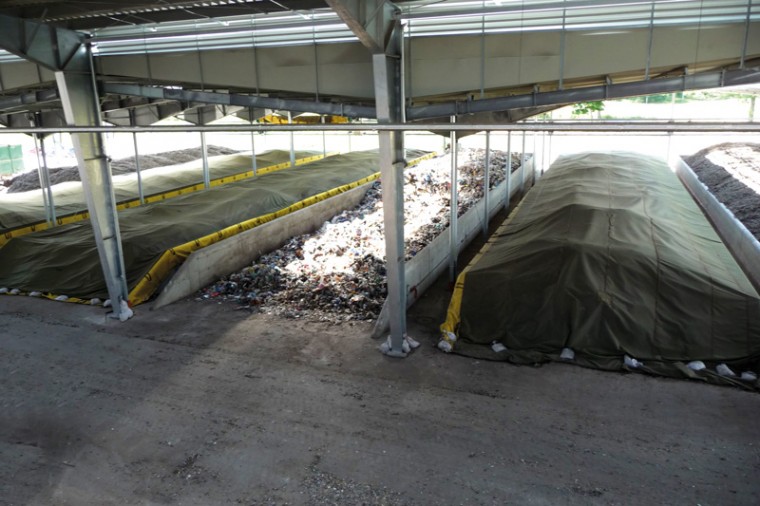
GASIFICATION TECHNOLOGY
GASIFICATION TECHNOLOGY
Gasification is a unique process that transforms a carbon-based material, such as MSW or biomass, into other forms of energy without actually burning it. Instead, gasification converts the solid and liquid waste materials into a gas through a chemical reaction. This reaction combines those carbon-based materials (known as feedstocks) with small amounts of air or oxygen (but not enough to burn the materials), breaking them down into simple molecules, primarily a mixture of carbon monoxide and hydrogen
What’s produced is a synthesis gas (syngas) that can be converted into electricity and valuable products. With gasification, MSW and wastes are no longer useless, but they become feedstocks for a gasifier. Instead of paying to dispose of and manage the waste for years in a landfill, using it as a feedstock for gasification reduces disposal costs and landfill space, and converts those wastes into valuable electricity
Gasification does not compete with recycling; in fact, it enhances it. Metals, glass, and other materials that cannot be gasified are typically segregated from the waste stream prior to being sent into the gasification process. In addition, many plastics in MSW cannot be recycled and would otherwise end up in a landfill. Those plastics make excellent high energy feedstocks for gasification, thereby reducing the amount of those unrecyclable materials that would otherwise end up in a landfill
There are significant environmental benefits of MSW gasification, including reducing the need for landfill space, decreasing methane emissions from the decomposition of organic materials in the landfill, and reducing the risk of surface water and groundwater contamination from landfills.
Gasification is Not Incineration
The gasification process represents significant advances over incineration. In order to understand the advantages of gasification when compared to incineration, it’s important to understand the differences between the two processes: Incineration literally means to render to ash. Incineration uses MSW as a fuel, burning it with high volumes of air to form carbon dioxide and heat. In a waste-to-energy plant that uses incineration, these hot gases are used to make steam, which is then used to generate electricity.
Gasification converts MSW to a usable synthesis gas, or syngas. It is the production of this intermediate product, syngas, which makes gasification so different from incineration. In the gasification process, the MSW is not a fuel, but a feedstock for a high temperature chemical conversion process.
Instead of producing just heat and electricity, as is done in a waste-to-energy plant using incineration, the syngas produced by gasification can be turned into higher value commercial products such as transportation fuels, chemicals, fertilizers, and even substitute natural gas. Incineration cannot achieve this.
Gasification is significantly different from and cleaner than incineration:
In the high temperature environment in gasification, larger molecules such as plastics, are broken down into the valuable components of syngas, which can be cleaned and processed before any further use;
In the high temperature environment in gasification, larger molecules such as plastics, are broken down into the valuable components of syngas, which can be cleaned and processed before any further use;
Dioxins and furans need sufficient oxygen to form or re-form, and the oxygen-deficient atmosphere in a gasifier does not provide the environment needed for dioxins and furans to form or reform; Dioxins need fine metal particulates in the exhaust to reform; syngas from gasification is typically cleaned of particulates before being used.
In gasification facilities that use the syngas to produce downstream products like fuels, chemicals and fertilizers, the syngas is quickly quench-cooled, so that there is not sufficient residence time in the temperature range where dioxins or furans could re-form; and When the syngas is primarily used as a fuel for making heat, it can be cleaned as necessary before combustion; this cannot occur with incineration.
The ash produced from gasification is different from what is produced from an incinerator. While incinerator ash is considered safe for use as alternative daily cover on landfills, there are concerns with its use in commercial products. In high-temperature gasification, the ash actually flows from the gasifier in a molten form, where it is quench-cooled, forming a glassy, non-leachable slag that can be used for making cement, roofing shingles, as an asphalt filler or for sandblasting. Some gasifiers are designed to recover melted metals in a separate stream, further taking advantage of the ability of gasification technology to enhance recycling.
- Reduces the need for landfill space
- Decreases methane emissions from decomposition of MSW in landfills
- Reduces risk of surface water and groundwater contamination from landfills
- Extracts useable energy from waste that can be used to produce high value products
- Enhances existing recycling programs
- Reduces use of virgin materials needed to produce these high value products
- Reduces transportation costs for waste that no longer needs to be shipped hundreds of miles for disposal
- Reduces use of fossil fuels








